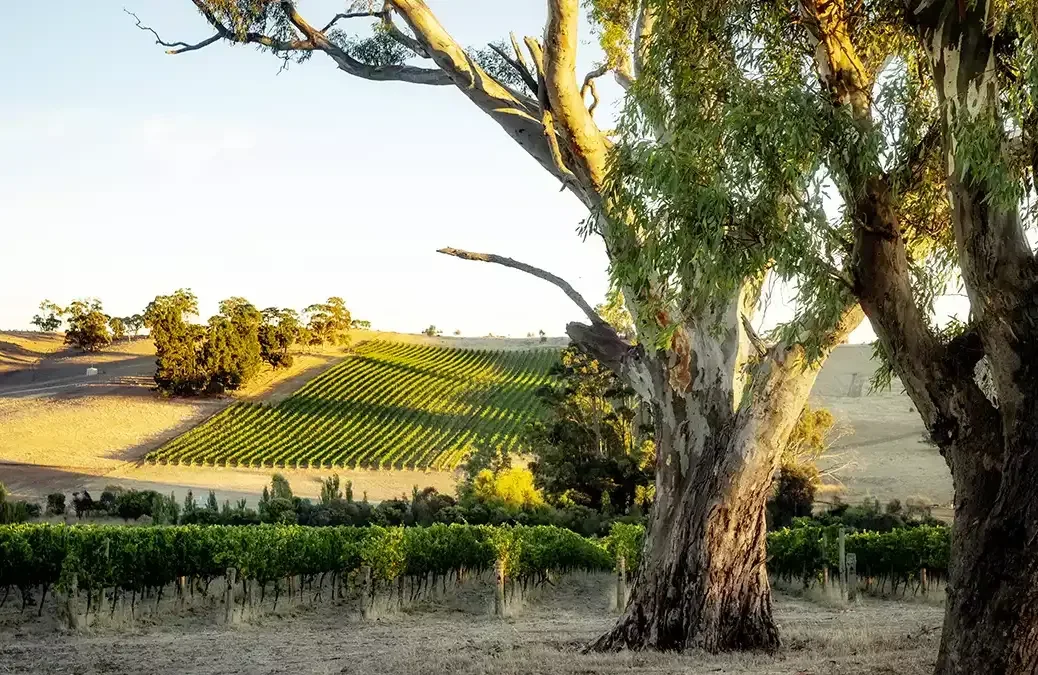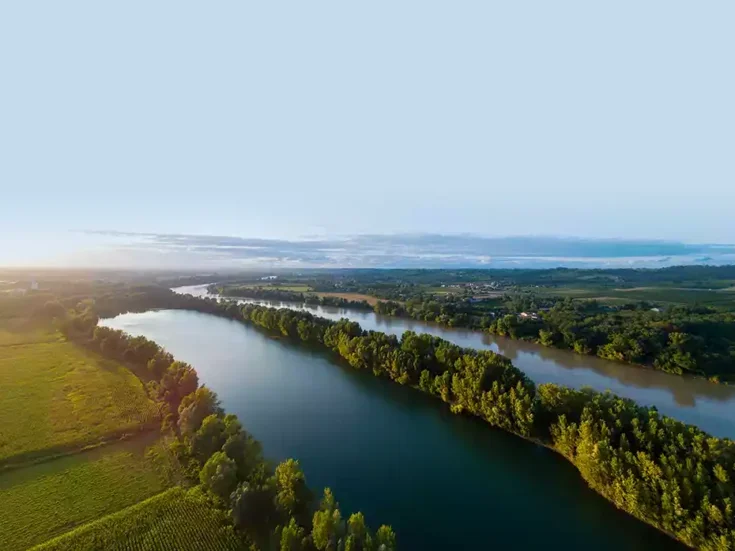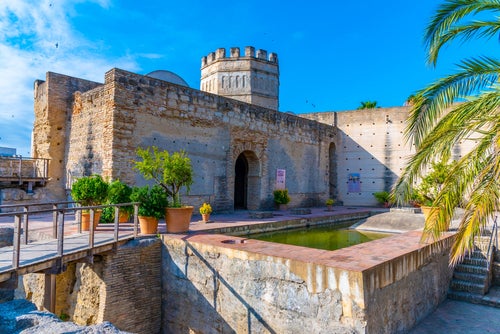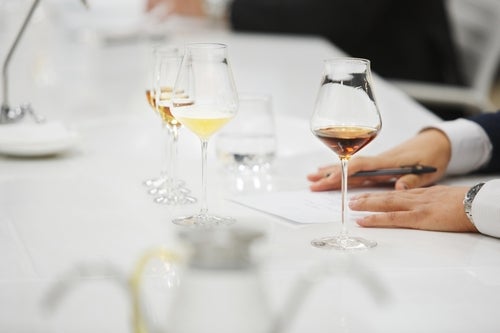
Sarah Ahmed reviews Alternative Reality: How Australian Wine Changed Course by Max Allen and The Australian Alternative Varieties Wine Show.
The bold yellow ochre and terracotta cover of Alternative Reality: How Australian Wine Changed Course evokes Australia’s sun-baked earth and the challenges it poses for grape growers—especially for those in Australia’s inland regions, even if the Murray, the country’s longest river, runs right through it.
Staring down the barrel of climate change, forward-thinking growers are turning to an eclectic cornucopia of “alternative” (some would say “climate appropriate” or “region appropriate”) grape varieties in a country whose ten most planted grapes account for 87% of the area under vine. If this varietal shift, the book’s subject-matter, strikes an unorthodox note, so does the co-authorship cover credit. It acknowledges the wine writer Max Allen and a wine show founded in 2001 on the banks of the River Murray in Mildura to promote alternative grape varieties. This is Alternative Reality, an account about how the Australian Alternative Varieties Wine Show (AAVWS) is helping to change the course of Australian wine (and wine culture).
Entrusting the inside story to an insider (Allen is a former AAVWS Chief of Judges) and the organization itself might have made for a self-congratulatory, turgid chronicle with limited appeal. At times it is a little self-indulgent, but the book deftly distils the spirit and ethos of a progressive show with a missionary zeal to convert the wine industry. Equally, known for his integrity and insightful analysis of the issues facing Australia’s wine industry, the writer is unafraid to tackle the big issues facing it—in particular, the myopic focus on a handful of grape varieties.
Peppered with profiles of the AAVWS’ founders and key participants over the years, Alternative Reality: How Australian Wine Changed Course gives voice to the grassroots’ discontent behind this viticultural resistance movement. Steve Pannell recalls the flak he received in 2015 for calling out an industry “totally obsessed with so-called classic French varieties” and planting them “in the most inappropriate places.” In his profile of Sue Bell, another leading winemaker, Allen quotes a comment she made in 2009, when the global financial crisis contributed to a wine glut. “[W]e were kidding ourselves trying to flog so much cheap wine overseas yet not focus on improving the knowledge and culture of Australian drinking,” said the winemaker.
A sense of lost opportunity pervades the book. After all, James Busby, the so-called “Father of Australian wine,” introduced a wide array of Mediterranean grape cuttings from his travels in France and Spain in 1832; and in a treatise published in 1867, entitled Wine-Growing in Australia, Dr AC Kelly observed, “in the great diversity of soil and climate to be found in Australia, there is little doubt that every variety cultivated in Europe would somewhere find a suitable location.” But with its boom-and-bust cycles (and Francophile fixation), being “John Bull’s [the UK’s] vineyard” and courting China has done little for the Australian wine industry’s economic and environmental sustainability. (According to Pia Piggott, the author of Rabobank’s “Swimming in Wine” Wine Quarterly Q3 2023 report, Australia is currently sitting on 875 Olympic-sized swimming pools worth of wine.)
The end of varietal conservatism?
How did this come about? Part One tracks the twists and turns of Australian grape growing, from the early “suck-it-and-see” approach, to the “know what I like, like what I know” varietal conservatism that informed a huge planting boom as exports sky-rocketed during the 1980s and ’90s. It concludes with an account of the AAVWS’s genesis, which began in Mildura in 1999 with the “Long Italian Lunch,” attended by more than 100 guests and forward thinkers. Described by Allen as a showcase and symposium about Italian grape varieties, it was organized by Stefano de Pieri (an Australian-Italian celebrity chef who felt Australia’s top French grapes “had taken food prisoner… holding back the development of lighter, more creative cuisines”), Bruce and Jenni Chalmers (nursery-owners), and Dr Rod Bonfiglioli (a British-born vine scientist), who were driven by the concept of climate suitability.
The writer makes no bones about the Chalmers’ vested interest in the show. The couple had just signed a deal with an Italian vine nursery, so the Italian Long Lunch (which showed wines from Italy) provided an opportunity to explore how the varieties they planned to import might shape Australia’s future viticultural landscape. Rebadged the Australian Italian Wine Show in 2000, then the AAVWS in 2001, entries soon mushroomed, encompassing Iberian, Georgian, Greek, Turkish, and Cretan varieties, in addition to less classic French grapes (such as Picpoul). Parts Two to Five track the evolution and deepening influence of the show whose “build it and they will come” hot-housing approach has moved the needle both varietally and stylistically. Pinot Gris/Grigio had already graduated to the mainstream by the time I judged at the 2016 AAVWS (with Prosecco following suit two years later). Back then the show featured 102 varieties and, with more than its fair share of light reds, skin-contact and flor-influenced whites, illustrated how alternative varieties have been a lightning rod for alternative wine styles. Meanwhile, the AAVWS’ “Talk & Taste” public panel discussions-cum-tastings have become a vital aspect of the show’s learning culture, further developing an understanding of Australia’s emerging alternative varietal and stylistic architecture.
In the “Afterword” to Alternative Reality: How Australian Wine Changed Course, Allen concedes, “[T]he reality is there’s still a long way to go.” Alternative varieties comprise less than 4% of Australia’s vineyard area, up from 1.8% in 2007, he reports. Much as the Australian wine tanker is slow to turn, a profile of the Beverage Director at Trader House (which owns some of Melbourne’s hottest watering holes) gives cause for optimism. For Leanne Altmann, the incumbent [and fourth female] Chief of Judges, “If you’re looking for where Australian wine is going, where people are challenging norms, Mildura is where you’ll find those wines.” Readers keen to peer into the crystal ball will find the glossary’s “Alternative A-Z” varietal profiles and top-performing wines lists most enlightening.
Alternative Reality: How Australian Wine Changed Course
Max Allen and The Australian Alternative Varieties Wine Show
Published by Melbourne Books: 255 pages; $US 47.27 / £38.99






